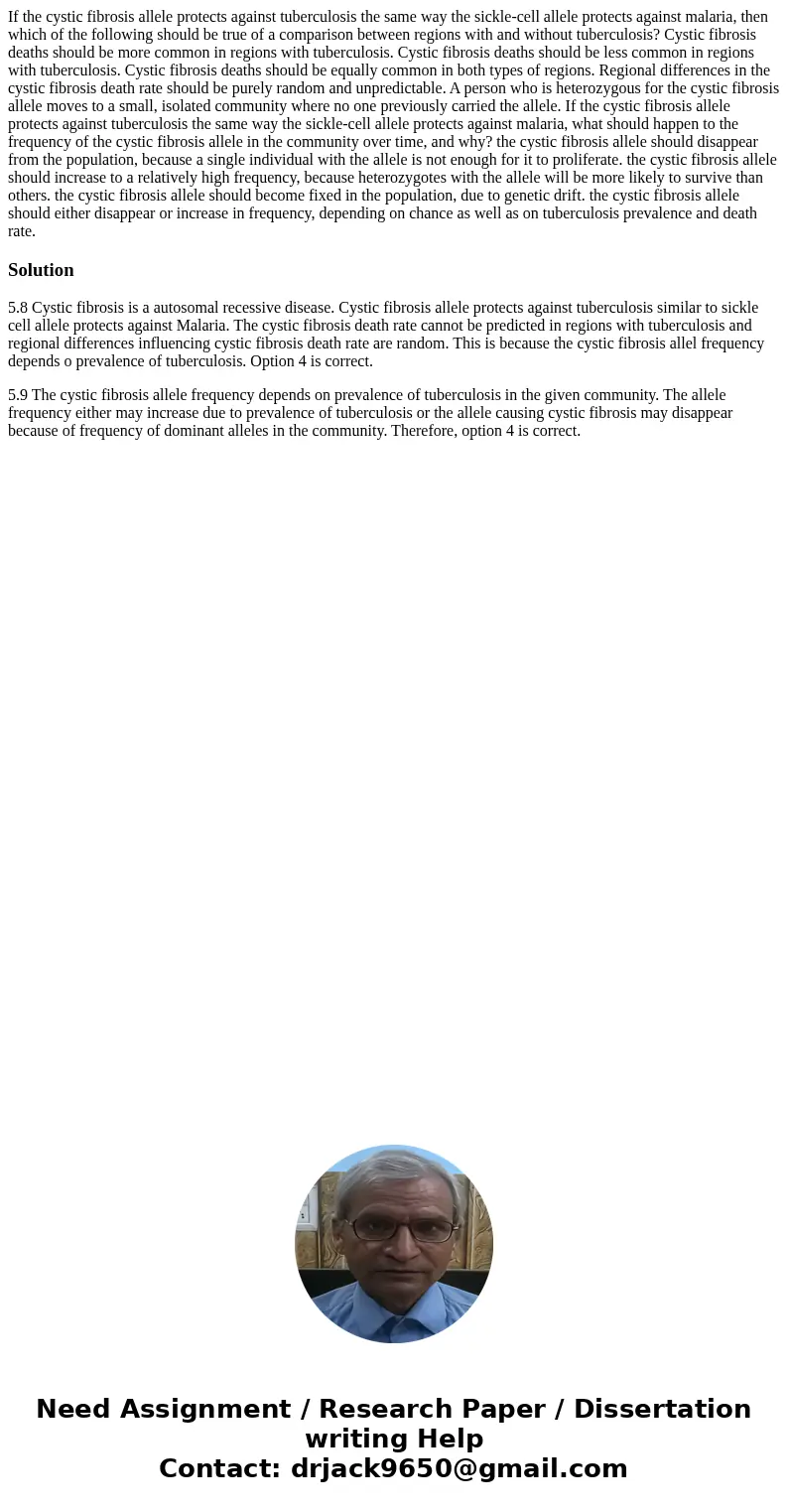If the cystic fibrosis allele protects against tuberculosis
If the cystic fibrosis allele protects against tuberculosis the same way the sickle-cell allele protects against malaria, then which of the following should be true of a comparison between regions with and without tuberculosis? Cystic fibrosis deaths should be more common in regions with tuberculosis. Cystic fibrosis deaths should be less common in regions with tuberculosis. Cystic fibrosis deaths should be equally common in both types of regions. Regional differences in the cystic fibrosis death rate should be purely random and unpredictable. A person who is heterozygous for the cystic fibrosis allele moves to a small, isolated community where no one previously carried the allele. If the cystic fibrosis allele protects against tuberculosis the same way the sickle-cell allele protects against malaria, what should happen to the frequency of the cystic fibrosis allele in the community over time, and why? the cystic fibrosis allele should disappear from the population, because a single individual with the allele is not enough for it to proliferate. the cystic fibrosis allele should increase to a relatively high frequency, because heterozygotes with the allele will be more likely to survive than others. the cystic fibrosis allele should become fixed in the population, due to genetic drift. the cystic fibrosis allele should either disappear or increase in frequency, depending on chance as well as on tuberculosis prevalence and death rate. 
Solution
5.8 Cystic fibrosis is a autosomal recessive disease. Cystic fibrosis allele protects against tuberculosis similar to sickle cell allele protects against Malaria. The cystic fibrosis death rate cannot be predicted in regions with tuberculosis and regional differences influencing cystic fibrosis death rate are random. This is because the cystic fibrosis allel frequency depends o prevalence of tuberculosis. Option 4 is correct.
5.9 The cystic fibrosis allele frequency depends on prevalence of tuberculosis in the given community. The allele frequency either may increase due to prevalence of tuberculosis or the allele causing cystic fibrosis may disappear because of frequency of dominant alleles in the community. Therefore, option 4 is correct.

 Homework Sourse
Homework Sourse